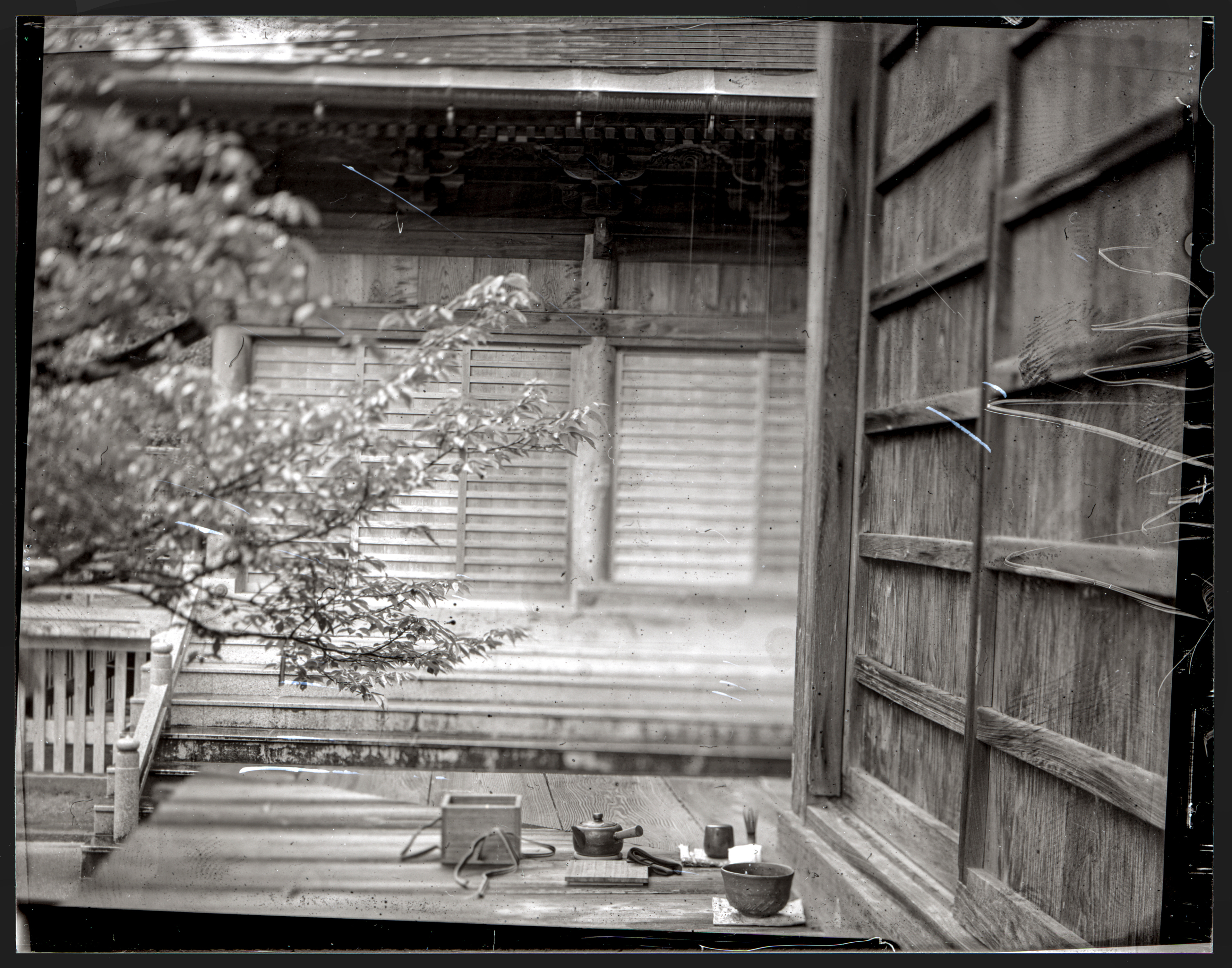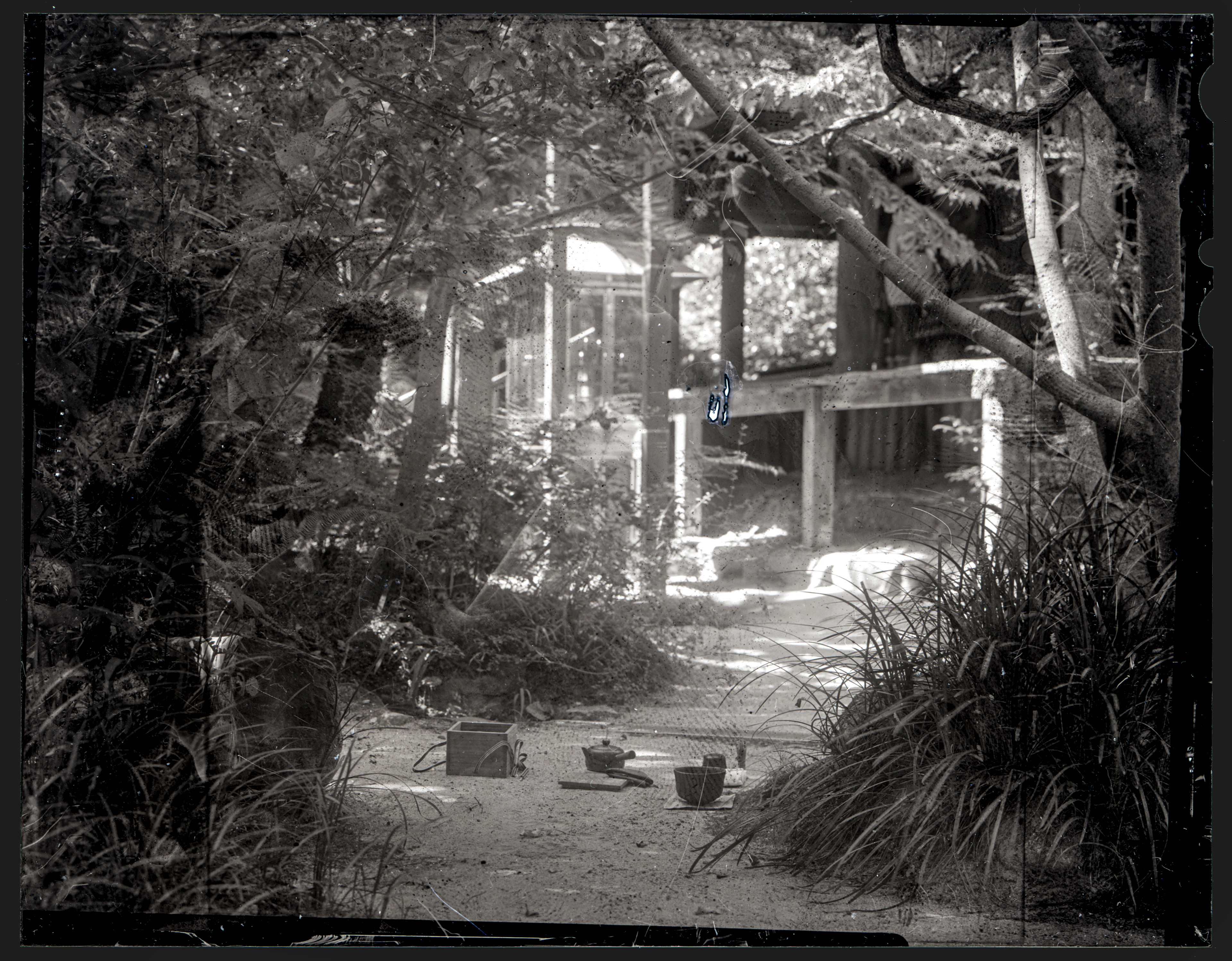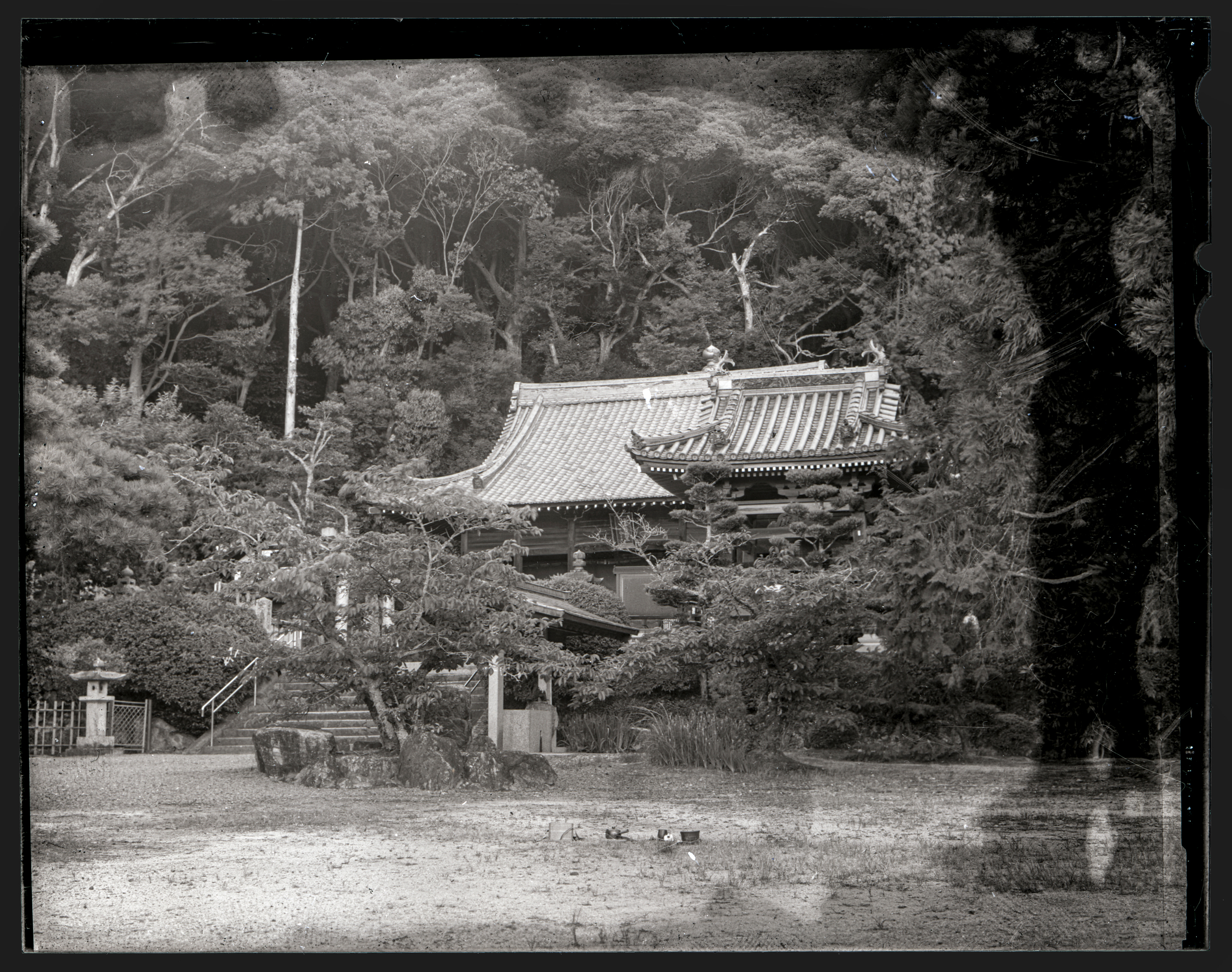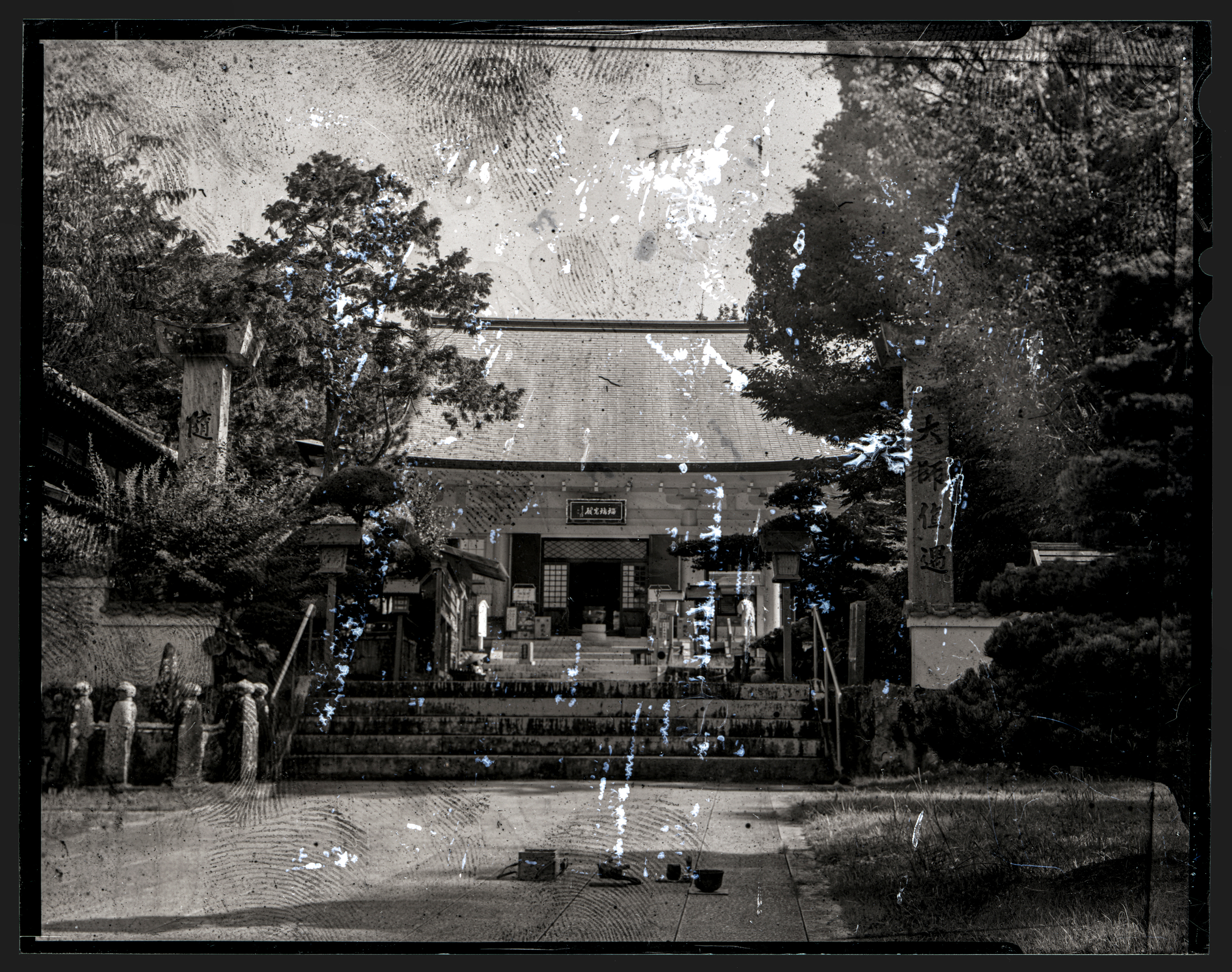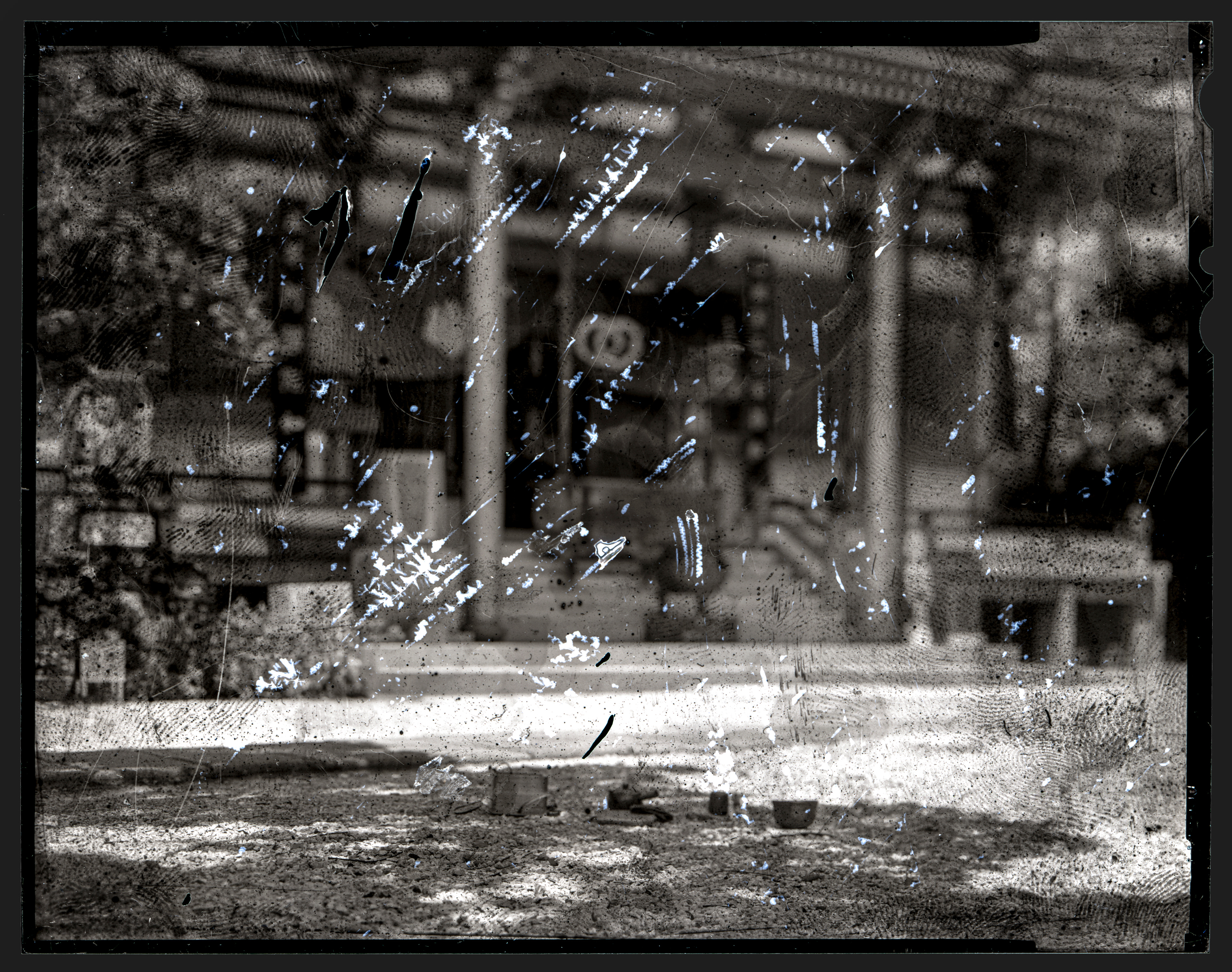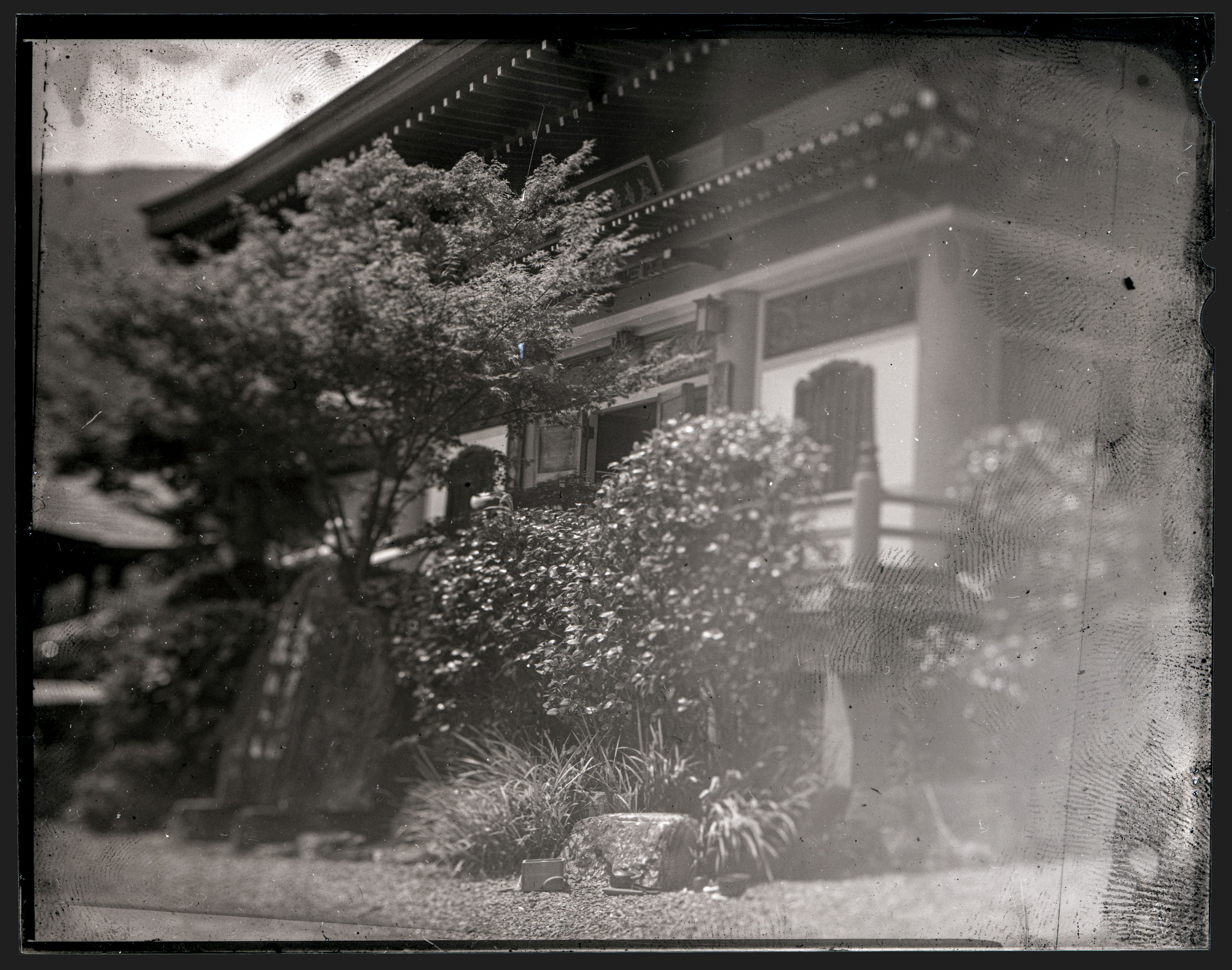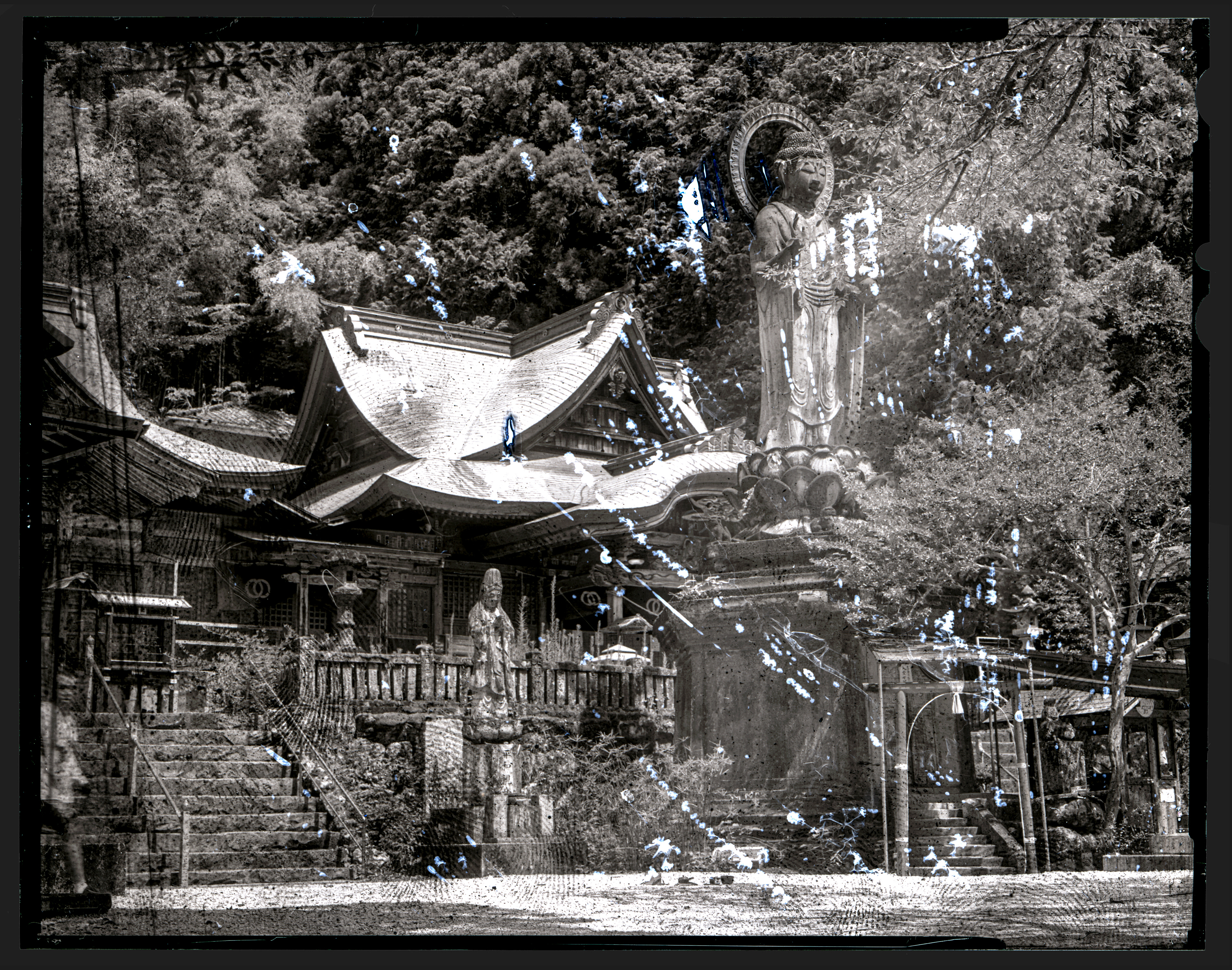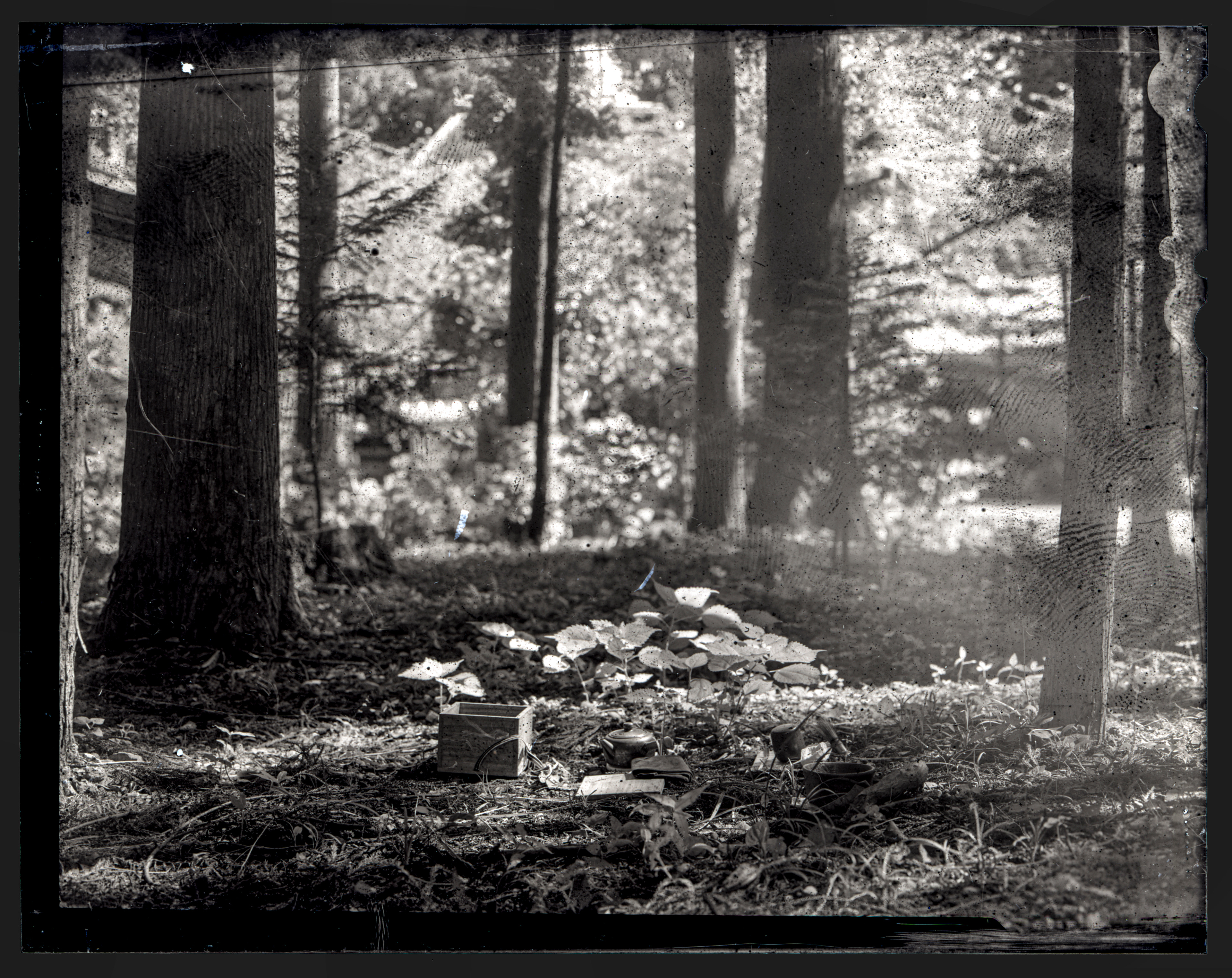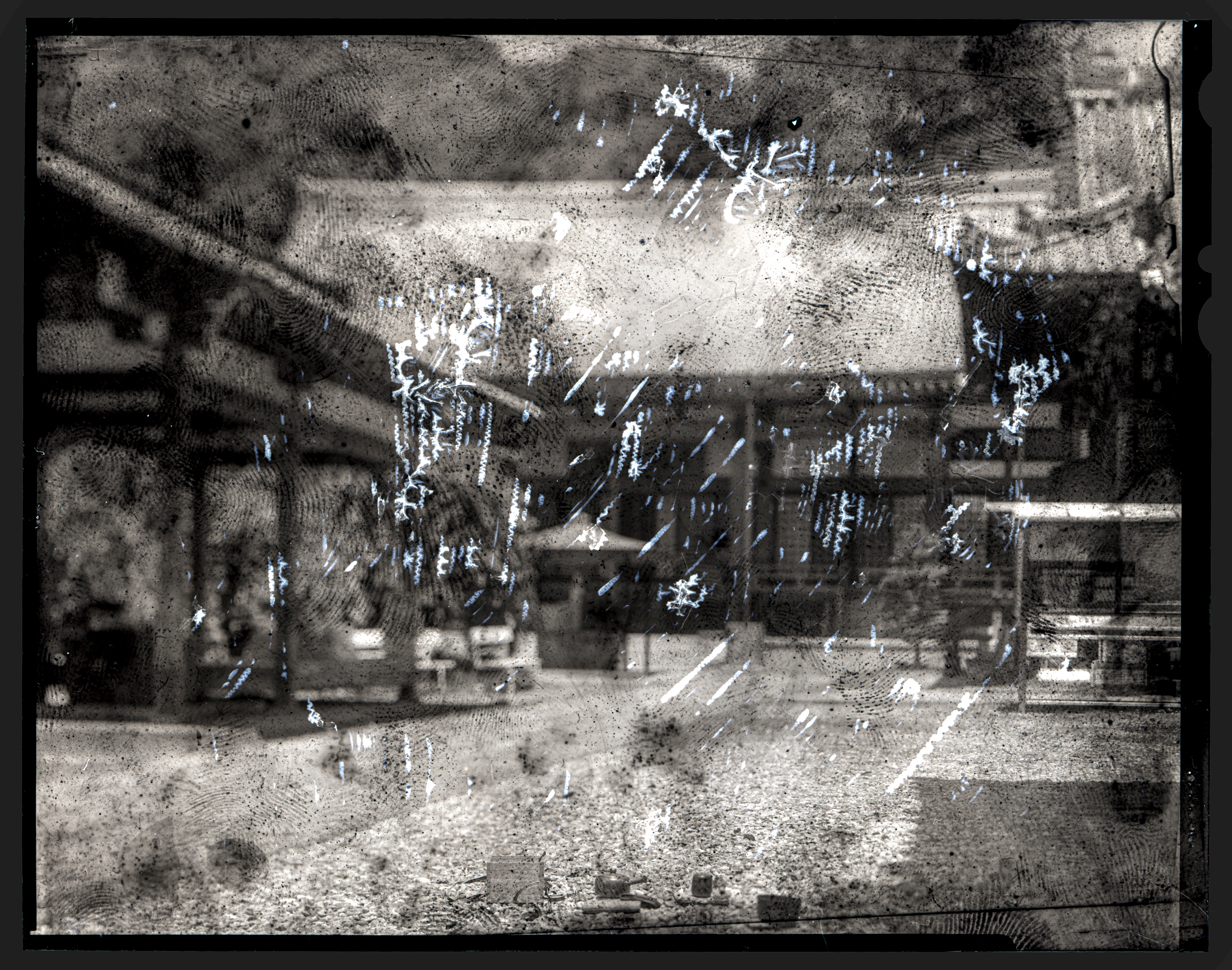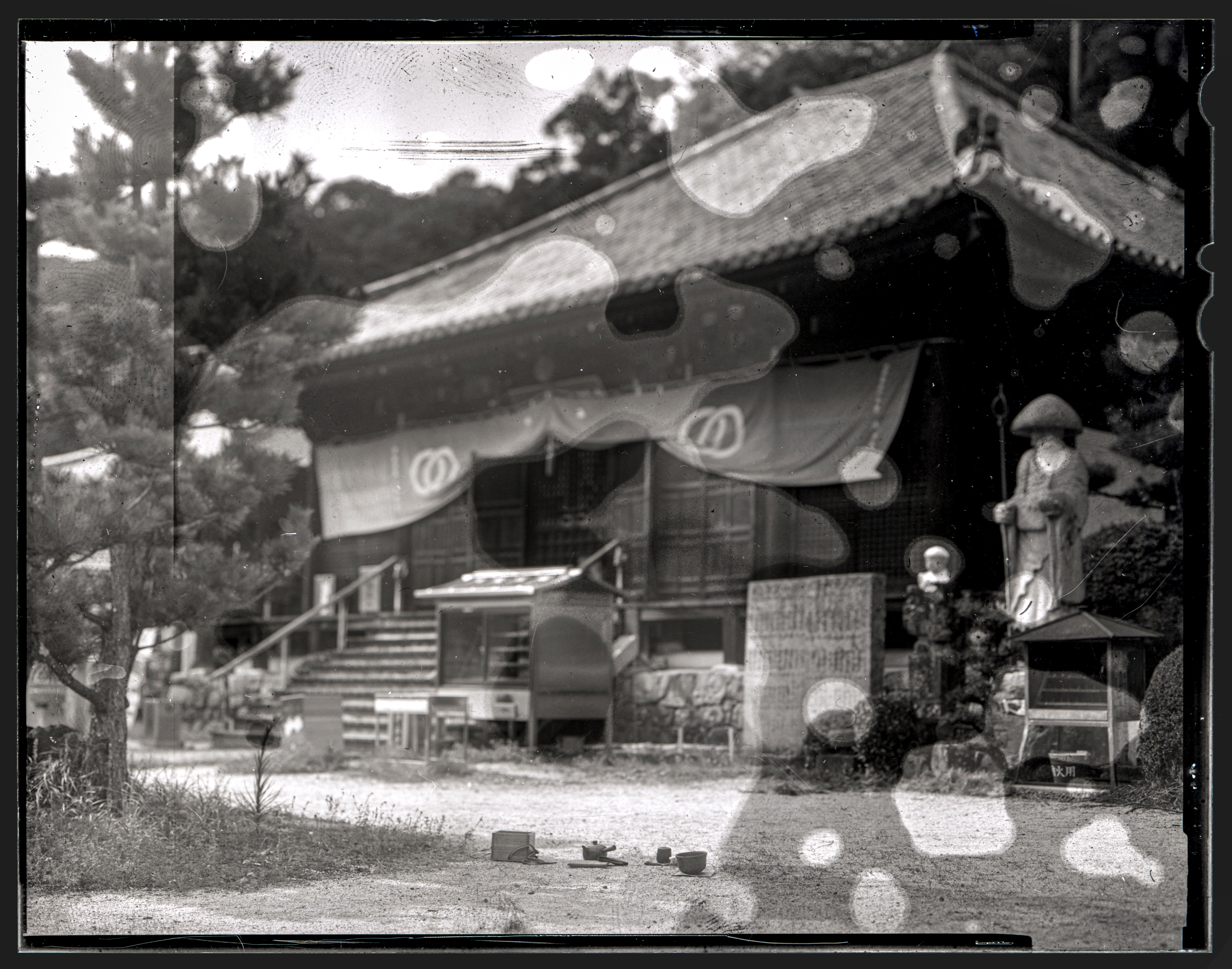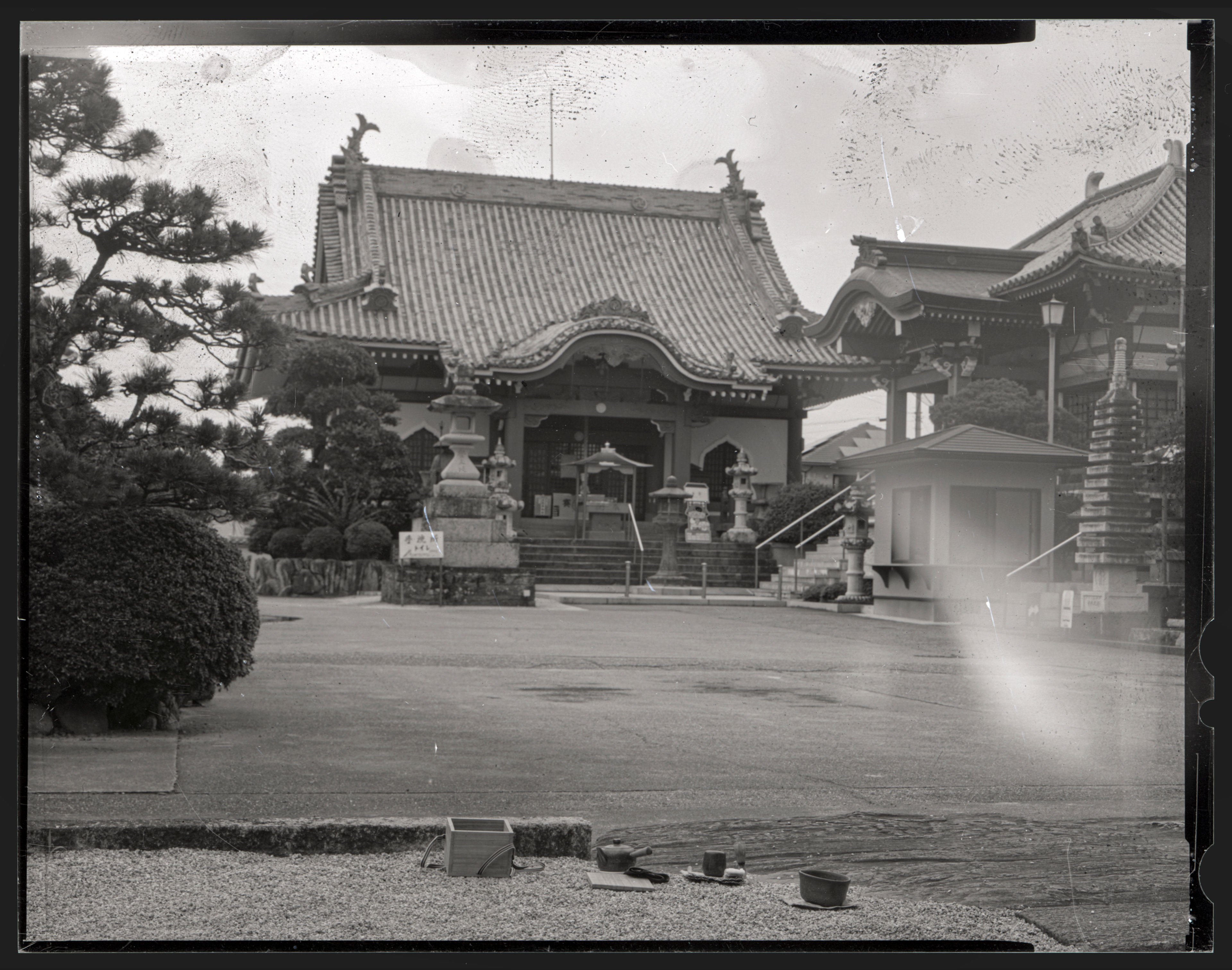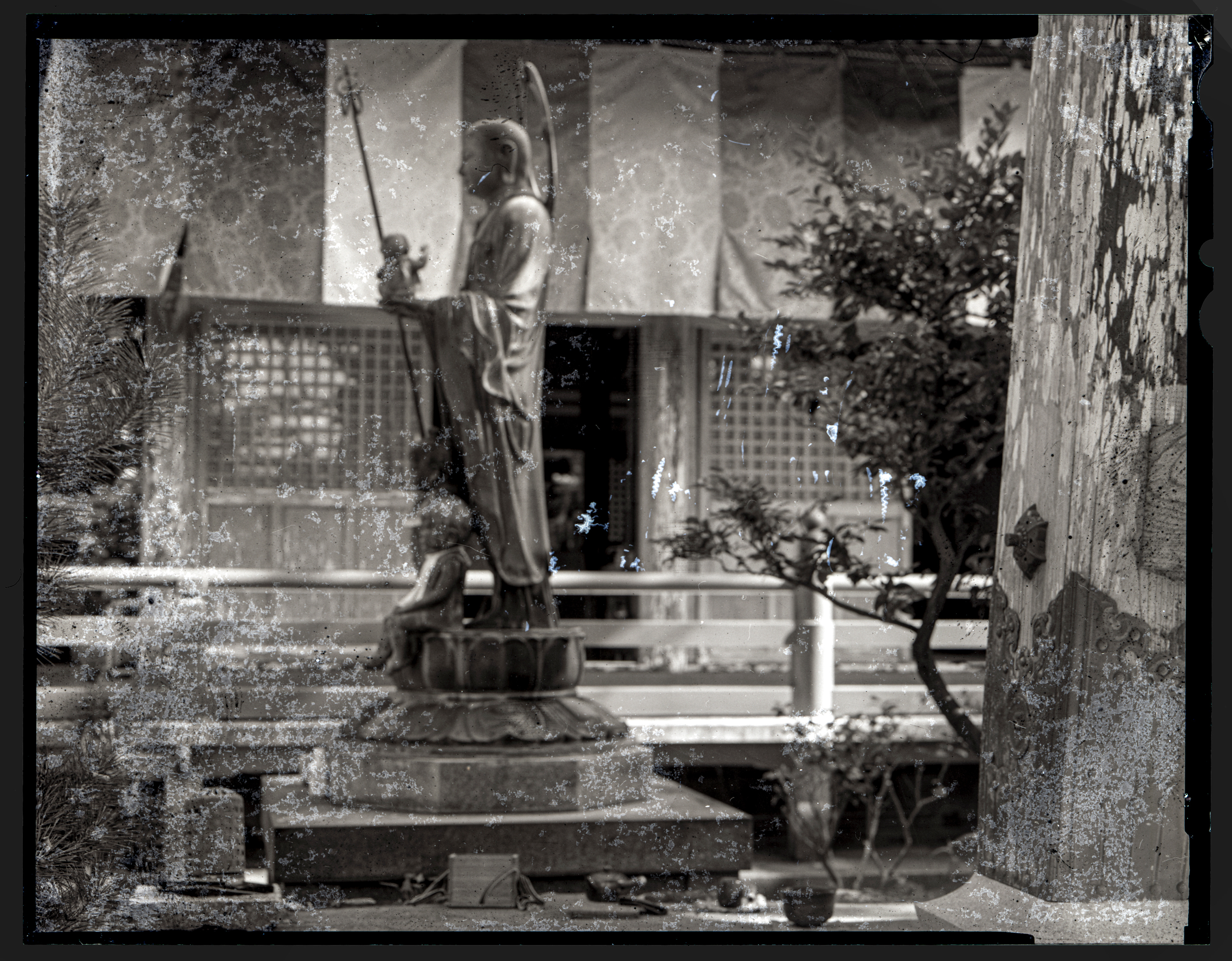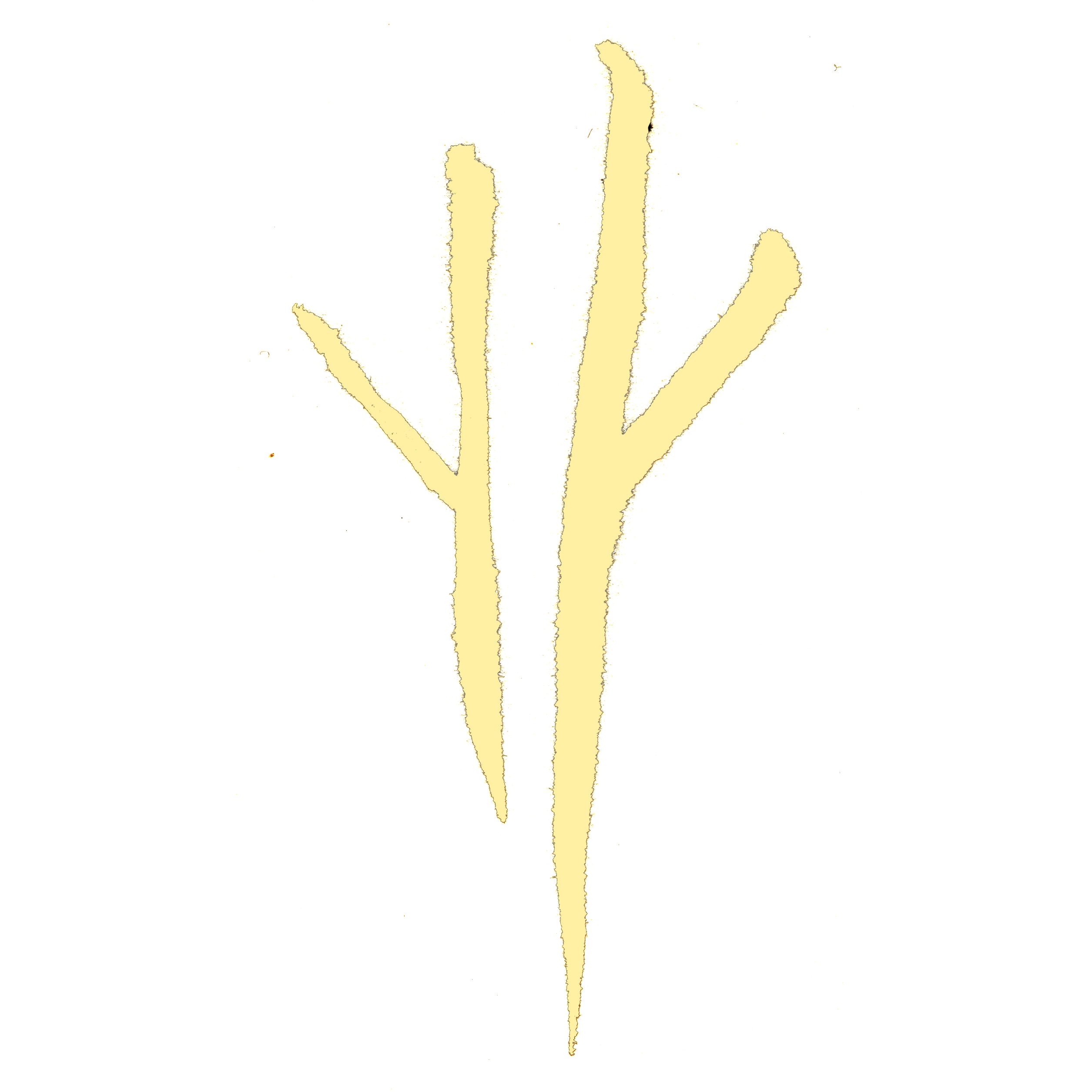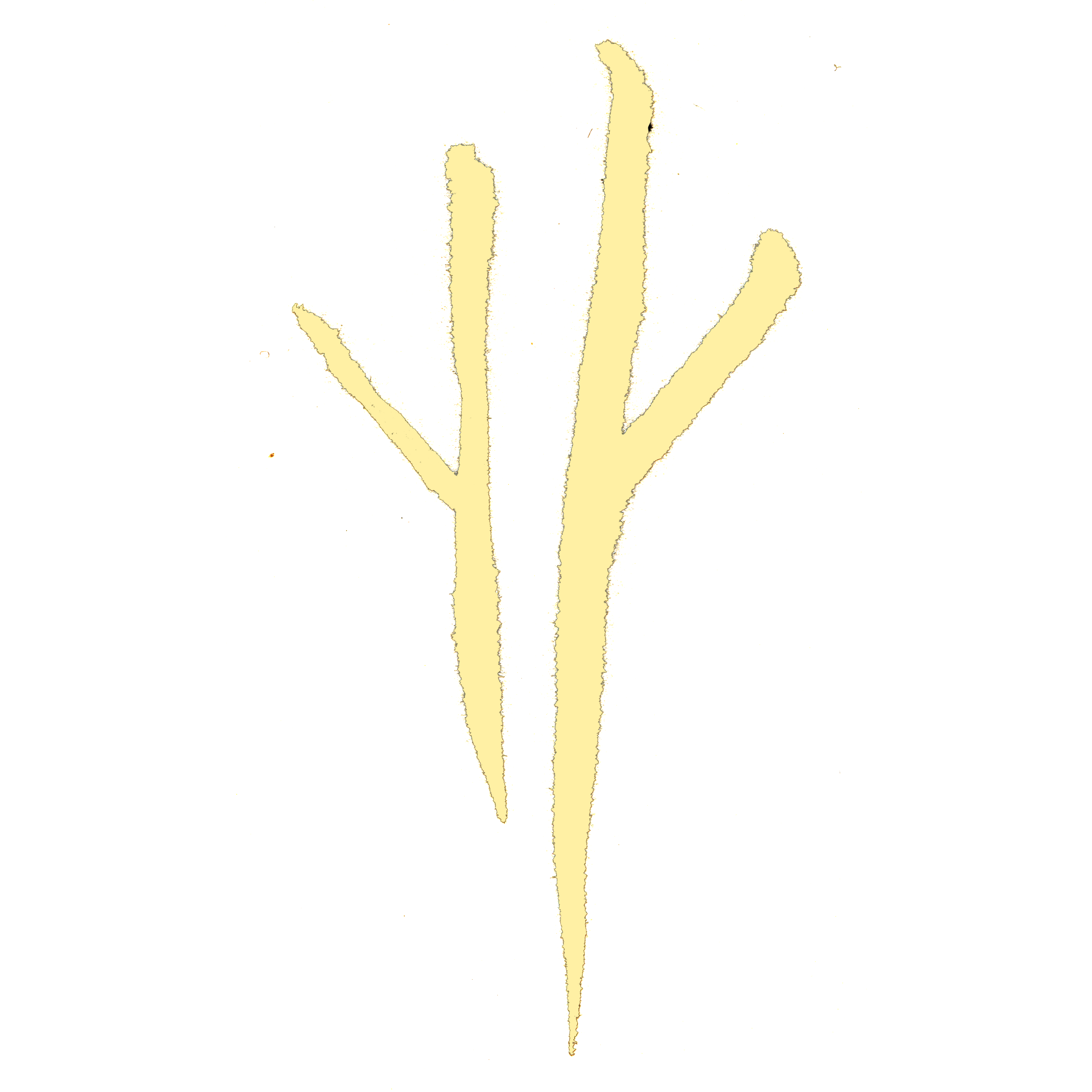During the summer of 2021, I journeyed through the 88 temples that make up the pilgrimage route on the island of Shikoku. A circular path of approximately 1200 km that, in the 9th century, served as the initiation journey for the monk Kobo-Daishi, the founder of the Shingon Buddhist sect.
88 temples. 88 ceremonies. 88 photographs.
The protocol is simple, but the execution is demanding. On my back, between the tent and the camera room, a wooden box containing the utensils necessary for the tea ceremony. The essentials. A teapot. A whisk and a bamboo spoon. A lacquer box containing matcha powder. A ceramic bowl. And then, a few silk cloths. At each of the temples along the pilgrimage, I made a stop. After unpacking my tea and photography equipment, I settled into the space. There, I prepared and drank a bowl of tea. After the ceremony, I photographed its trace.
A dark image with the film forever retaining the marks of the humidity and heat of a semi-tropical environment. These images bear witness to the performance as much as they are a part of it. The pilgrimage route, the tea ceremony, and photography blend into a single ritual, a single performance. The ceremony is a pretext for the journey, and the journey is a pretext for spiritual practice. None exists without the other two, and all three activities merge as much as they distinguish themselves from each other.
The films preserve the traces of time from this pilgrimage. It was summer, on a semi-tropical island. It was very hot and humid. This left marks on the negatives that I sometimes had to remove, or even tear apart from each other. These mistakes, these marks, these damages, are metaphors for me of what the pilgrimage is.
